Incredibly fast and agile, the cheetah is the world’s fastest land animal. Although unique, it also is Africa’s most endangered cat.
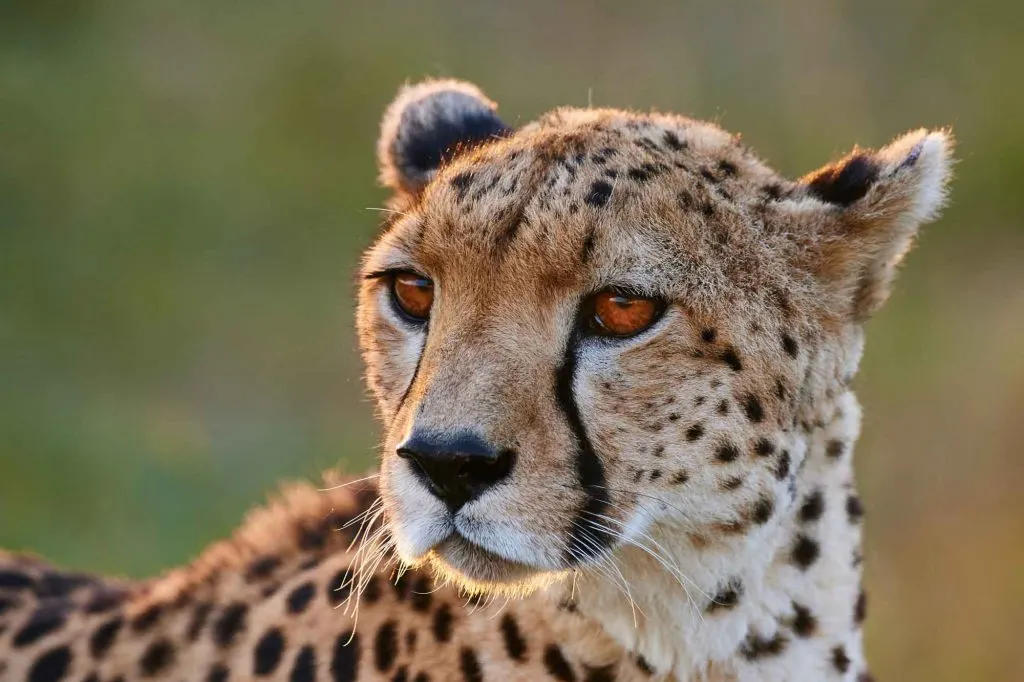
Cheetah
Acinonyx jubatus
Cheetah Scientific Classification
- Kingdom: Animalia
- Phylum: Chordata
- Class: Mammalia
- Order: Carnivora
- Family: Felidae
- Genus: Acinonyx
- Species: Acinonyx jubatus
Cheetah Appearance
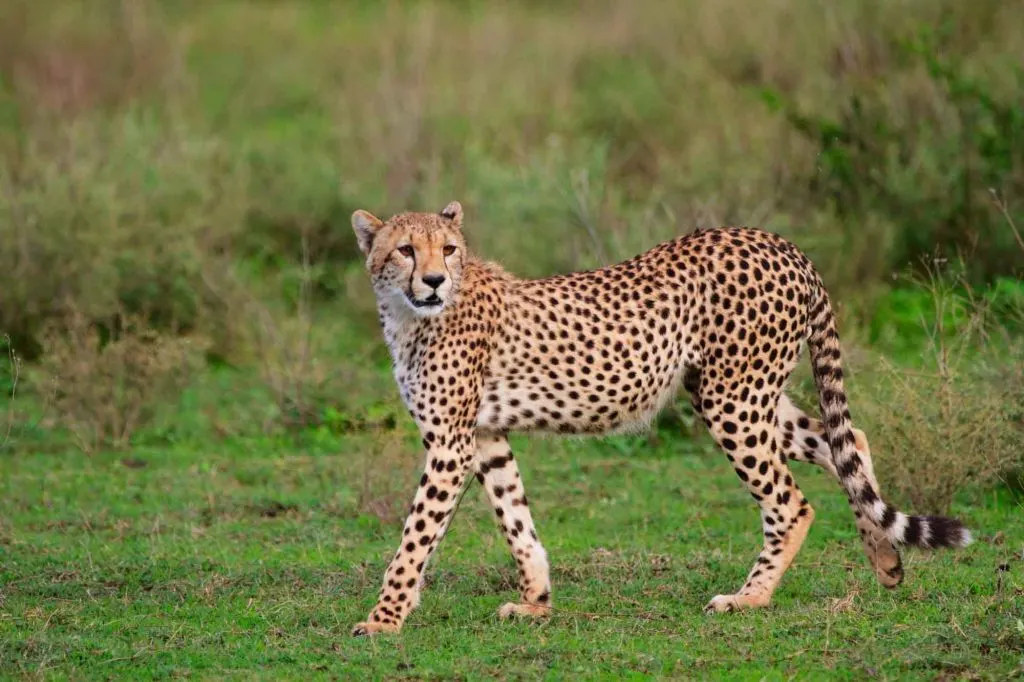
- Lifespan: 10-20 years
- Length: 44-59 inches
- Height: 29-35 inches
- Weight: 46-159 pounds
- Top speed: 81 mph
The cheetah is not only the fastest of the big cats, but one of the biggest of the wild cats of Africa and is recognized for its tawny to creamy white coat dotted with black patches and tear marks, which are the main differences between a cheetah vs leopard.
These tear marks run down from the inner eye along the nose to the outside of the mouth on its relatively small head.
Beyond that, this type of big cat is an exceptionally nimble animal, having powerful hind legs and a very flexible, muscular spine. Because of it and its long and slender body, the cheetah is very agile.
Also, its long tail is covered in black ringed markings and helps the cheetah to keep its balance and change direction while running.
On top of that, the cheetah digs its semi-non-retractable claws into the ground while running, enhancing its grip at high speed.
Did you know? The cheetah is the fastest land mammal going from 0 to 60 mph in three seconds.
Cheetah Range & Habitat
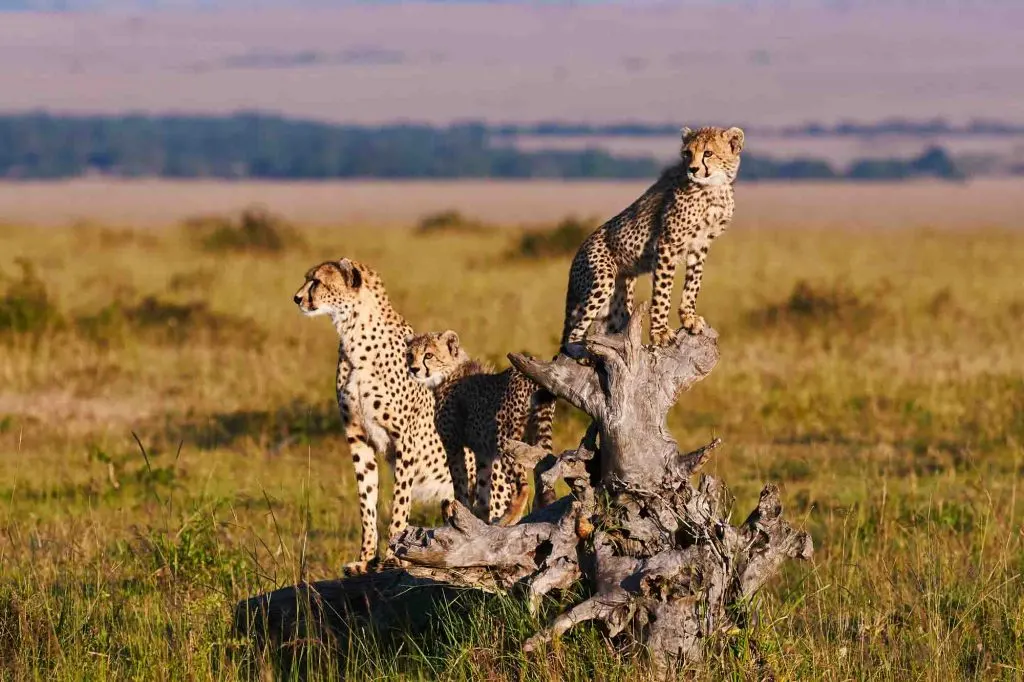
This feline is distributed mostly over eastern through southern Africa and western Asia.
It is present in a wide range of habitats, from dry forests and thick scrubs through dry grasslands and arid mountain range in the Sahara desert. It also occurs in the savannas in the Serengeti and hilly desert terrain in Iran.
Distribution
- Continents: Africa and Asia.
- Countries: Algeria, Angola, Benin, Botswana, Burkina Faso, Central African Republic, Chad, Ethiopia, Iran, Kenya, Mali, Mozambique, Namibia, Niger, South Africa, South Sudan, Tanzania, Uganda, Zambia, Zimbabwe, Eritrea, and Swaziland.
Habitat
Savanna | Shrubland | Grassland | Desert
Cheetah Behavior and Lifestyle
Female cheetahs tend to live a solitary life, only gathering to nurse their cubs.
They lead a nomadic life searching for prey in large home ranges.
On the other hand, males tend to group together for life forming coalitions to defend their territory, and are often sedentary.
Beyond that, cheetahs are quite vocal and communicate a lot through chirping, churring, and purring.
Cheetah Diet
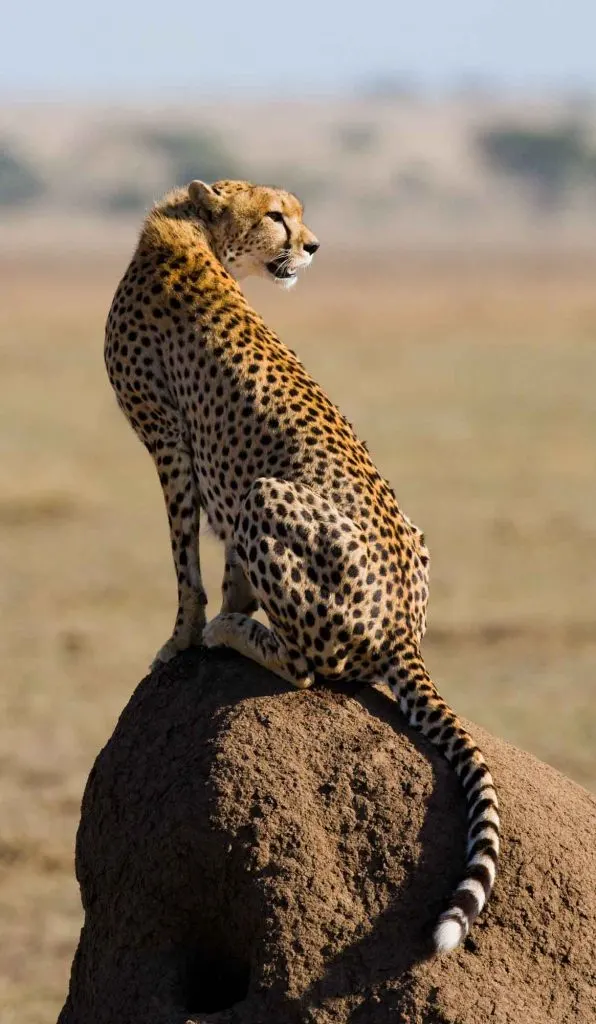
While other carnivores, such as lions and leopards, are more active during the night, cheetahs are mostly active during the day to avoid these larger predators.
Namely, lions and leopards might become very aggressive toward cheetahs, trying to fight them to steal their food.
Cheetahs usually hunt small to medium-sized animals weighing between 44 to 132 pounds.
They often prey on angulates, such as dama gazelle, Thomson’s gazelle, impalas, and chinkara. However, they also prey on smaller animals, such as the desert hare or birds if there’s a shortage of food.
Cheetahs use their vision to hunt instead of their sense of smell. They stalk their prey, trying to conceal themselves in cover, approaching as close as possible. They move slowly keeping their head lower than the shoulders, and once the prey is within 660 feet, they will start the chase.
Then, they run after their prey, reaching top speed in just a few seconds, however, cheetahs can only sustain them for over a distance of about 1,500 feet.
They then grasp the prey’s neck, causing the animal to suffocate. Cheetahs must cool down after they hunt if they expend too much energy running.
Getting to such high speeds puts a tremendous toll on their bodies with their body temperature rising to dangerous heights. You’ll often see them lounging in the shade after sprinting or running.
Cheetah Reproduction and Mating
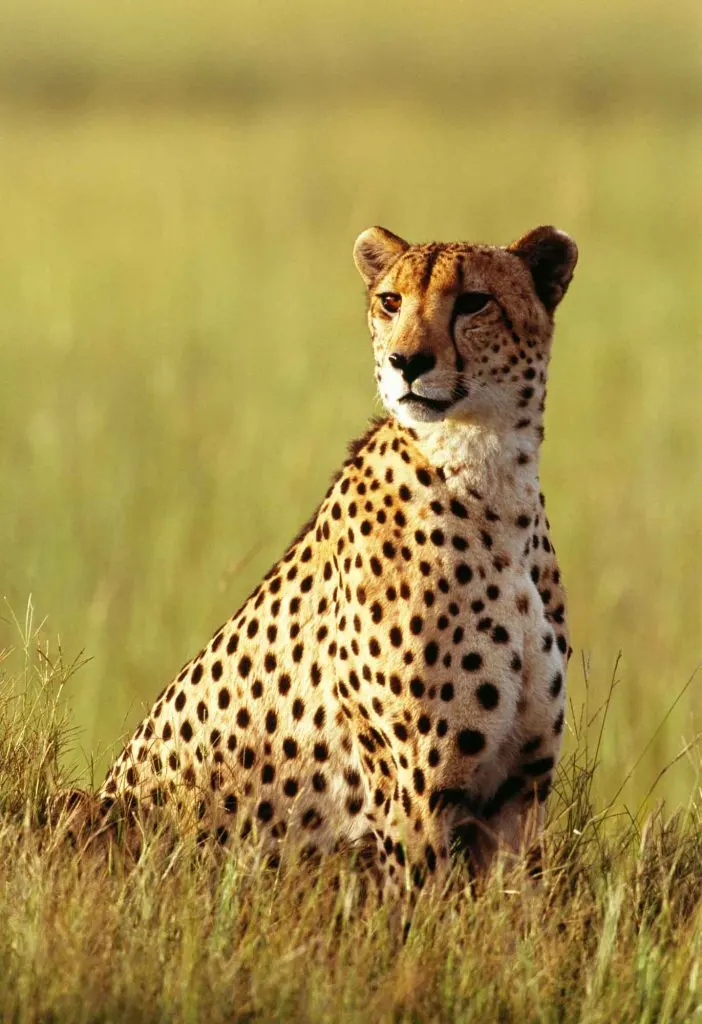
As induced ovulators, cheetahs can breed throughout the year. Their gestational period lasts between 90-98 days and females can conceive again after 17-20 months from giving birth.
Mating begins with the male approaching the female, who lies down on the ground. They often chirp, purr, or yelp at this time. No other courtship behavior is observed in this polygynous mating system.
Because females are far less social than males are, they try to keep interaction with males at a minimum even during mating. After copulating, they part ways.
On the other hand, males in a coalition often have better chances of finding females.
Compared to other felids, cheetah cubs are highly vulnerable to several predators during the first few weeks of their life.
The vigilant mothers keep their cubs hidden in dense vegetation for the first two months and nurse in the early morning.
Cheetah Conservation Status
Vulnerable[1]
Cheetah Predators and Threats
Larger cats, such as lions and leopards prey on cheetahs, especially to steal their food.
Hyenas also tend to prey on these felines.
Besides being other animal’s prey, the major threats to the cheetah’s population are hunting and direct persecution.
Farmers, poachers, and habitat loss are some of their major threats.
Also, the development of tourism in their habitat can interfere with their grouping system and hunting habits.
Cheetah Facts
These are a few interesting facts in no particular order. For more info about these incredible animals, check out the fun cheetah facts.
- Cheetah is the world’s fastest land animal.
- When running, cheetahs use their tail to steer, like a rudder for a boat.
- A cheetah’s claws don’t retract when they run. Instead, they act like cleats to help the cheetah reach its top speeds.
- Females usually give birth to between two to eight cubs at a time. She nurses her youngsters in a lair hidden by tall vegetation, until they are 16 to 24 months old and able look after themselves.
- Cheetah translates to “large, spotted cat” in Hindi.
